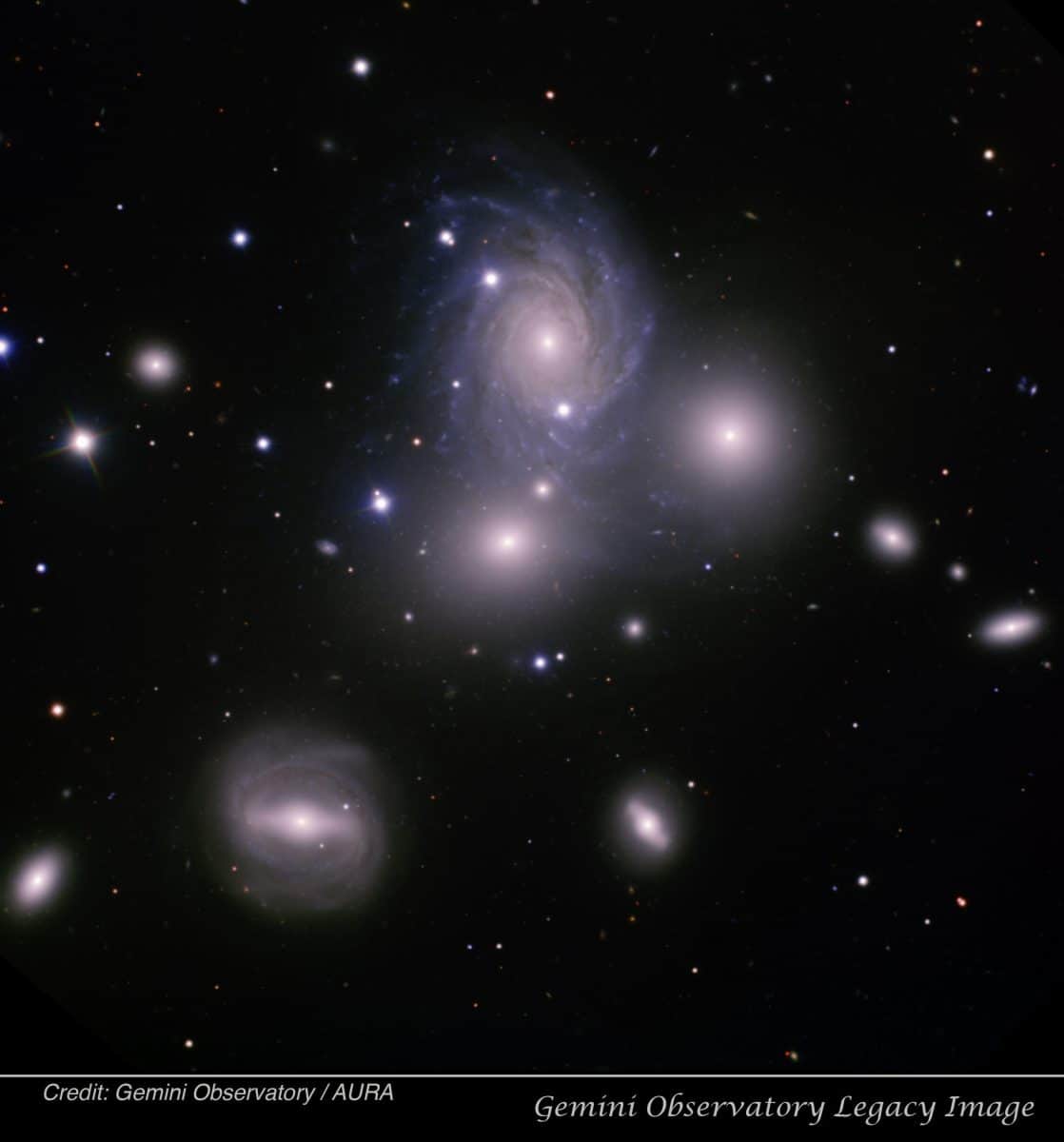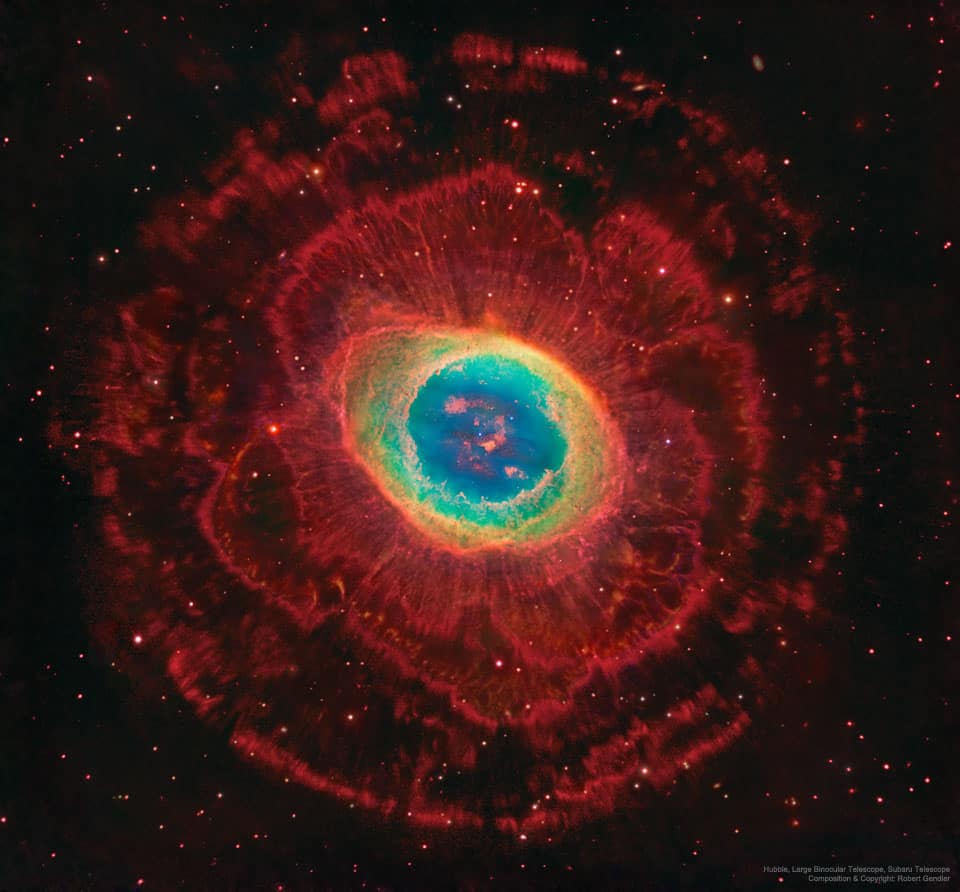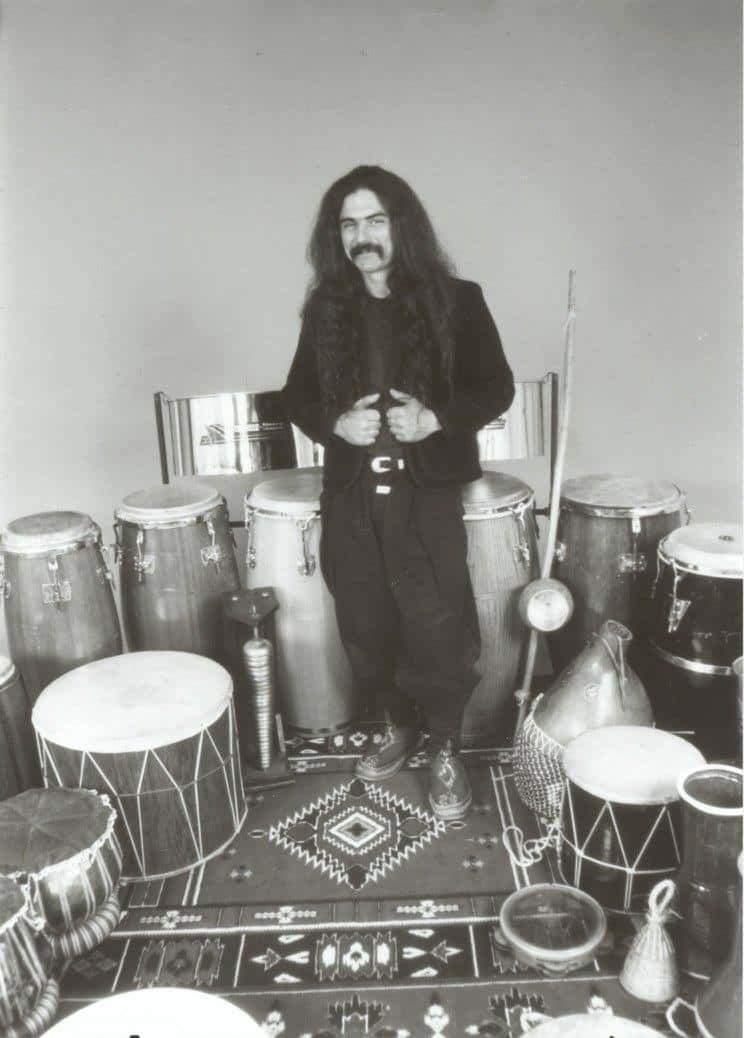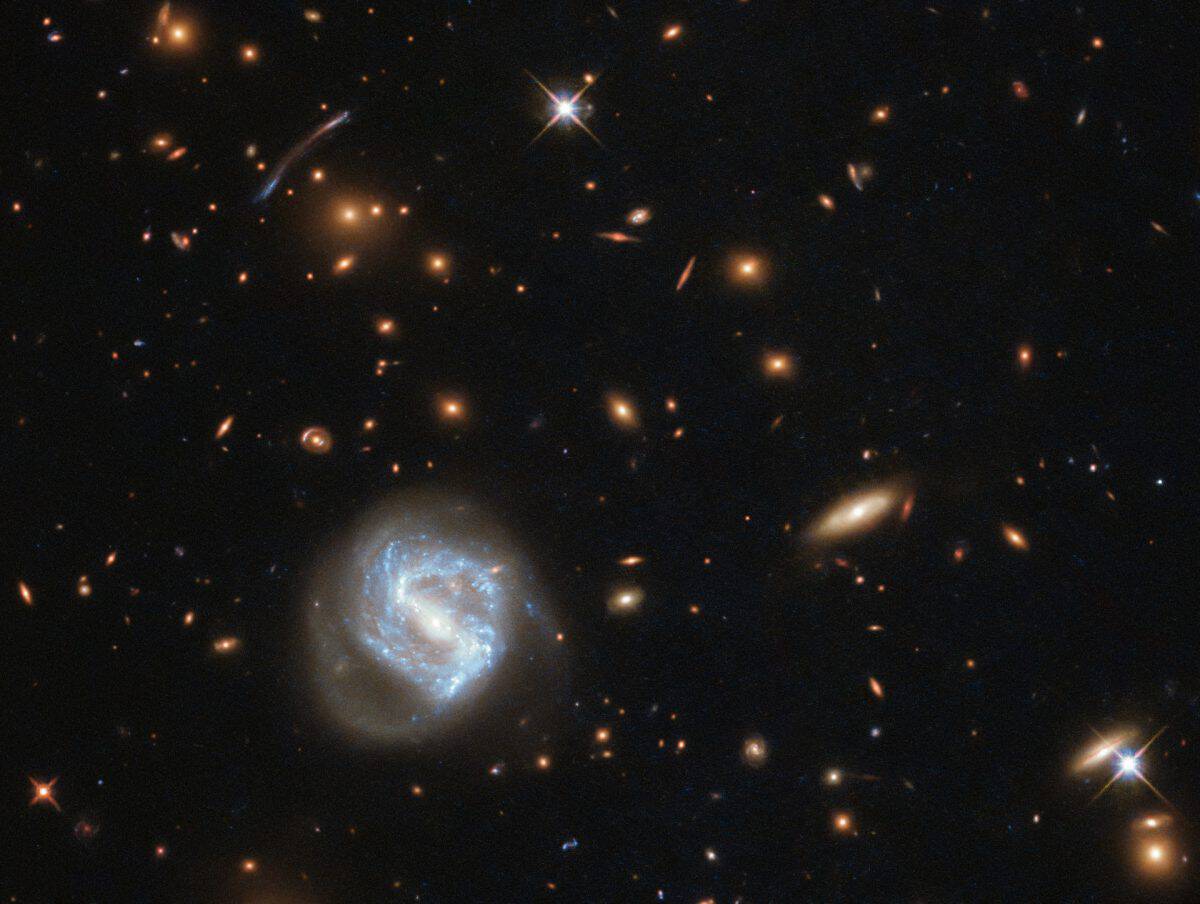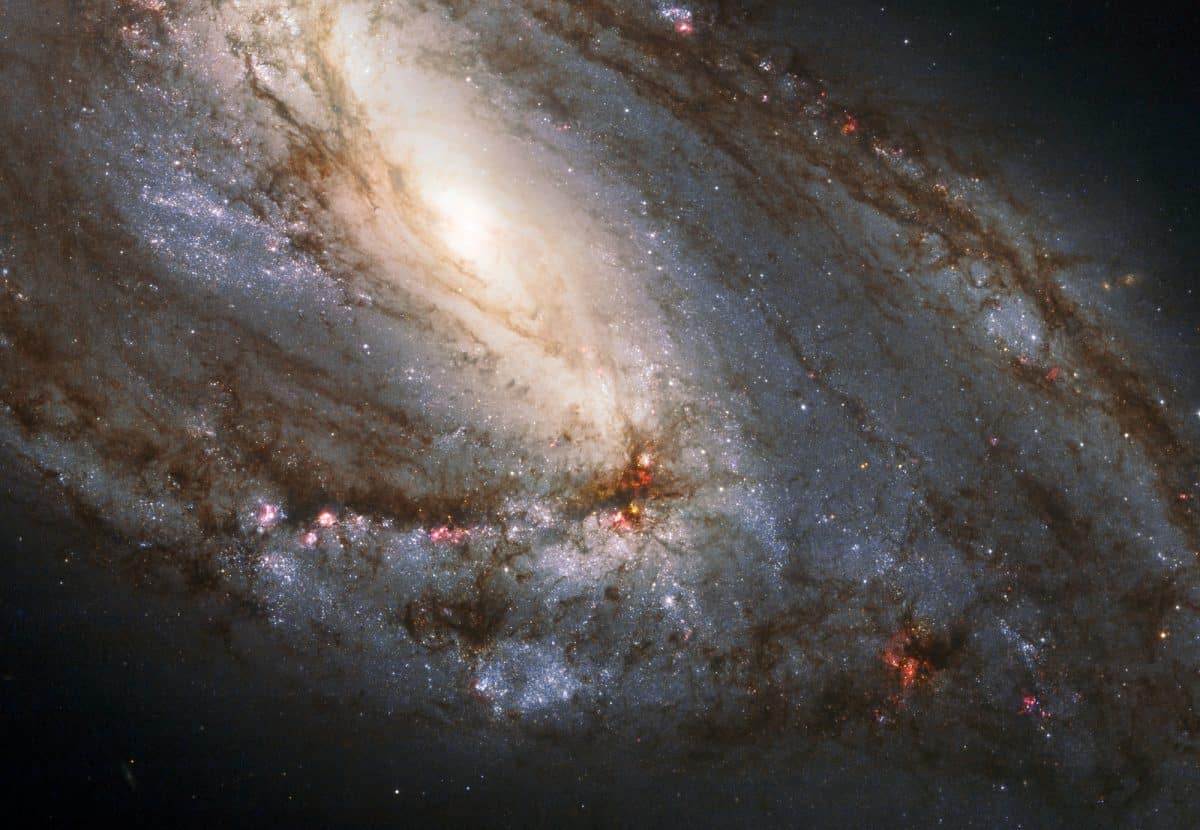Blog
Gemini Legacy image of the galaxy group VV 166, obtained using the Gemini Multi-Object Spectrograph (GMOS), at the Gemini North telescope located on Mauna Kea, Hawai‘i. In this image, north is up, east left, and the field of view is 5.2 x 5.2 arcminutes. Composite color image produced by Travis Rector, University of Alaska Anchorage. Image credit: Gemini Observatory/AURA.
VV 166, sometimes also called the NGC 70 galaxy group or Arp 113, is a cluster of galaxies in Andromeda. The main group was discovered in 1784 by William Herschel, who listed the galaxies as a single object. Later, in the 1880s, John Louis Emil Dreyer managed to discern some of the galaxies in this region and cataloged them. The prominent elliptical galaxy in the region, NGC 68, is probably not a member of the group.
~300 mly distance
more...Desmond Dekker (16 July 1941 – 25 May 2006) was a Jamaican ska, rocksteady and reggae singer-songwriter and musician. Together with his backing group the Aces (consisting of Wilson James and Easton Barrington Howard), he had one of the earliest international reggae hits with “Israelites” (1968). Other hits include “007 (Shanty Town)” (1967), “It Miek” (1969) and “You Can Get It If You Really Want” (1970).
Desmond Adolphus Dacres was born in Saint Andrew Parish (Greater Kingston), Jamaica, on 16 July 1941. Dekker spent his formative years in Kingston. From a young age he regularly attended the local church with his grandmother and aunt. This early religious upbringing, as well as Dekker’s enjoyment of singing hymns, led to a lifelong religious commitment. Following his mother’s death, he moved to the parish of St. Mary and later to St. Thomas. While at St. Thomas, Dekker embarked on an apprenticeship as a tailor before returning to Kingston, where he became a welder. His workplace singing had drawn the attention of his co-workers, who encouraged him to pursue a career in music. In 1961 he auditioned for Coxsone Dodd (Studio One) and Duke Reid (Treasure Isle), though neither audition was successful. The unsigned vocalist then auditioned for Leslie Kong‘s Beverley’s record label and was awarded his first recording contract.
https://www.youtube.com/watch?v=ZqgWuMcHc3g
more...Callen Radcliffe “Cal” Tjader, Jr. (/ˈtʃeɪdər/ CHAY-dər; July 16, 1925 – May 5, 1982) was an American Latin jazz musician, known as the most successful non-Latino Latin musician. He explored other jazz idioms, even as he continued to perform the music of Cuba, the Caribbean, and Latin America for the rest of his life.
Tjader played the vibraphone primarily. He was accomplished on the drums, bongos, congas, timpani, and the piano. He worked with many musicians from several cultures. He is often linked to the development of Latin rock and acid jazz. Although fusing jazz with Latin music is often categorized as “Latin jazz” (or, earlier, “Afro-Cuban jazz“), Tjader’s works swung freely between both styles. His Grammy award in 1980 for his album La Onda Va Bien capped off a career that spanned over forty years.
Callen Radcliffe Tjader, Jr. was born 16 July 1925 in St. Louis, Missouri, to touring Swedish American vaudevillians. His father tap danced and his mother played piano, a husband-wife team going from city to city with their troupe to earn a living. When he was two, Tjader’s parents settled in San Mateo, California, and opened a dance studio. His mother (who dreamed of becoming a concert pianist) instructed him in classical piano and his father taught him to tap dance. He performed around the Bay Area as “Tjader Junior,” a tap-dancing wunderkind. He performed a brief non-speaking role dancing alongside Bill “Bojangles” Robinson in the film The White of the Dark Cloud of Joy.
https://www.youtube.com/watch?v=4DlH00B6WGM
more...There is much more to the familiar Ring Nebula (M57), however, than can be seen through a small telescope. The easily visible central ring is about one light-year across, but this remarkably deep exposure – a collaborative effort combining data from three different large telescopes – explores the looping filaments of glowing gas extending much farther from the nebula‘s central star. This remarkable composite image includes narrowband hydrogen image, visible light emission, and infrared light emission. Of course, in this well-studied example of a planetary nebula, the glowing material does not come from planets. Instead, the gaseous shroudrepresents outer layers expelled from a dying, sun-like star. The Ring Nebula is about 2,000 light-years away toward the musical constellation Lyra.
more...Joseph Rudolph “Philly Joe” Jones (July 15, 1923 – August 30, 1985) was a Philadelphia-born American jazz drummer, known as the drummer for the first “Great” Miles Davis Quintet. He should not be confused with another jazz drummer, Papa Jo Jones, who had a long tenure with Count Basie. The two men died only a few days apart.
As a child, Jones appeared as a featured tap dancer on The Kiddie Show on the Philadelphia radio Station WIP. He was in the US Army during World War II.
In 1947 he became the house drummer at Café Society in New York City, where he played with the leading bebop players of the day. Among them, the most important influence on Jones was Tadd Dameron. Jones toured and recorded with Miles Davis Quintet from 1955 to 1958—a band that became known as “The Quintet” (along with Red Garland on piano, John Coltrane on sax, and Paul Chambers on bass). Davis acknowledged that Jones was his favorite drummer, and stated in his autobiography that he would always listen for Jones in other drummers.
https://www.youtube.com/watch?v=E8bOWhK6sB8
more...Sadik Hakim (born Argonne Thornton on July 15, 1919 in Duluth, Minnesota – June 20, 1983, New York City) was an American jazz pianist and composer.
Thornton was taught piano by his grandfather and started playing professionally about 1939. In 1944 he moved to New York City and was hired by Ben Webster. He participated in the emergence of bebop, reputedly sharing piano duties with Dizzy Gillespie on Charlie Parker‘s “Ko-Ko” session in November 1945 and recording with Dexter Gordon and Lester Young (he can be heard on Young’s “I’m Confessin'”). Hakim is credited with co-writing Thelonious Monk‘s standard “Eronel” and is rumored to have written a few famous bop tunes credited to other composers. He adopted his Muslim name in 1947.
Hakim moved to Montreal after visiting in 1949 and was active on the bebop scene there, working with Louis Metcalf‘s International Band. However, he was compelled to leave Canada following an incident involving drugs in November 1950. Through the 1950s he worked in New York with James Moody and George Holmes Tate. He returned to Montreal from 1966 to 1976, leading bands and recording with Charlie Biddle. He led a few recording dates from 1976–1980 and cut an album with Sonny Stitt in 1978.
Hakim played “‘Round Midnight” at Thelonious Monk‘s funeral in 1982, and died himself the following year.
more...https://www.youtube.com/watch?v=XjM7vwrpGfw
more...DRUM JAM Saturday July 14th 10am-1pm
Bring your drum down
Hosted by mick laBriola
Midtown Farmers Market
2225 E Lake St, Minneapolis, MN 55407
Scientists of the Hubble project showed a fantastic image of galactic clusters.
The galaxies are rather randomly distributed in space. Some live alone, others swarm hundreds of them together, interacting with each other with the forces of gravity.
For example, our own native Milky Way galaxy is a member of the Local Group, which in turn is part of the Virgin Group, which in turn is part of 100,000 galaxies of the giant super cluster Laniakea.
The cluster of galaxies, which is presented in this photo, is known under the designation SDSS J0333 + 0651. Such galactic groups can help astronomers understand how our universe was born and formed, as well as all its inhabitants.
The galaxy cluster SDSS J0333 + 0651 was photographed in studies of stellar formation in extensive galaxies. As a rule, star-forming regions are not very large and extend in outer space only a few hundred light-years. However, it is very difficult for telescopes to determine the exact distance of star forming regions in galaxies. To facilitate this task, astronomers use galactic clusters with powerful gravity that warps space and time and creates a so-called lens that helps to know the more accurate distances of these regions.
more...Angélique Kpasseloko Hinto Hounsinou Kandjo Manta Zogbin Kidjo, known as Angélique Kidjo (born July 14, 1960), is a Grammy Award-winning Beninese singer-songwriter, actress and activist, noted for her diverse musical influences and creative music videos. Time magazine has called her “Africa’s premier diva”. The BBC has included Kidjo in its list of the African continent’s 50 most iconic figures. The Guardian has listed her as one of its Top 100 Most Inspiring Women in the World and Kidjo is the first woman to be listed among “The 40 Most Powerful Celebrities In Africa” by Forbes magazine. The Daily Telegraph in London described her as “The undisputed queen of African music” during the 2012 Olympic Games River of Music Festival. In March 2013, NPR, National Public Radio in America, called her “Africa’s greatest living diva”. Kidjo is listed among the “2014 Most Influential Africans” by New African magazine and Jeune Afrique. Forbes Afrique put Kidjo on the cover of their “100 most influential women” issue in 2015. On June 6, 2013, Kidjo was elected vice-president of the Confédération Internationale des Sociétés d´Auteurs et Compositeurs (CISAC). She now resides in New York City, where she is an occasional contributor to the New York Times.Kidjo has received Honorary Doctorates from Yale University, Berklee College of Music and Middlebury College. She is the 2018 Harvard University Jazz Master In Residence.
more...Henry “Rubberlegs” Williams (14 July 1907 in Atlanta – 17 October 1962 in New York City) was an American blues and jazz singer, dancer and occasional female impersonator. A star of Vaudeville, he is probably best remembered for his singing work with Charlie Parker and Dizzy Gillespie, although it was for his dancing that he was renowned for in New York City and Boston.
Williams was born in Atlanta in 1907. He became employed as dancer with Bobby Grant’s Female Impersonators in 1919 and became a spectacle. He later won several Cakewalk and Charleston competitions and other dancing contests and achieved success on Vaudeville, going on tours with the Theater Owners Booking Association. He got his nickname “Rubberlegs” because he danced as if he had legs made of rubber. In 1933 he appeared in the short film Smash Your Luggage, and appeared in shows like the “Cotton Club Parade” and “Blackbirds of 1933”. He was a regular performer at The Cotton Club and the Apollo in Harlem, and at the Southland ballroom in Boston, and according to Count Basie, he became the venue’s most prominent attraction with his elaborates dances. He also appeared as a singer with prominent artists such Count Basie Orchestra, Fletcher Henderson, Chick Webb and Charlie Parker, and sang on the first recording of Dizzy Gillespie‘s “Hot House” on April 1, 1945 in New York City.
more...From the Santeria tradition
https://www.youtube.com/watch?v=OBy3QD9f8yU&list=PLEB3LPVcGcWbHKyo-uy8CkVvebHEsluVK&index=20
more...Messier 66 (also known as NGC 3627) is an intermediate spiral galaxy about 36 million light-years away in the constellation Leo. It was discovered by Charles Messier in 1780. M66 is about 95 thousand light-years across with striking dust lanes and bright star clusters along sweeping spiral arms.M66 is part of the Leo Triplet, a small group of galaxies that also includes M65 and NGC 3628. As of 2015, four supernovae have been observed in M66.
Gravitational interaction from its past encounter with neighboring NGC 3628 has resulted in an extremely high central mass concentration; a high molecular to atomic mass ratio; and a resolved non-rotating clump of H Imaterial apparently removed from one of the spiral arms. The latter feature shows up visually as an extremely prominent and unusual spiral arm and dust lane structures as originally noted in the Atlas of Peculiar Galaxies.
more...Albert Ayler (/ˈaɪlər/; July 13, 1936 – November 25, 1970) was an American avant-garde jazz saxophonist, singer and composer.
After early experience playing R&B and bebop, Ayler began recording music during the free jazz era of the 1960s. However, some critics argue that while Ayler’s style is undeniably original and unorthodox, it does not adhere to the generally accepted critical understanding of free jazz. In fact, Ayler’s style is difficult to categorize in any way, and it evoked incredibly strong and disparate reactions from critics and fans alike. His innovations have inspired subsequent jazz musicians.
His trio and quartet records of 1964, such as Spiritual Unity and The Hilversum Session, show him advancing the improvisational notions of John Coltrane and Ornette Coleman into abstract realms where whole timbre, and not just mainly harmony with melody, is the music’s backbone. His ecstatic music of 1965 and 1966, such as “Spirits Rejoice” and “Truth Is Marching In”, has been compared by critics to the sound of a brass band, and involved simple, march-like themes which alternated with wild group improvisations and were regarded as retrieving jazz’s pre-Louis Armstrong roots.
Born in Cleveland, Ohio, Ayler was first taught alto saxophone by his father Edward, who was a semiprofessional saxophonist and violinist. Edward and Albert played alto saxophone duets in church and often listened to jazz records together, including swing era jazz and then-new bop albums.
more...Peter Michael Escovedo (born 13 July 1935 in Pittsburg, California) is a Mexican-American percussionist.
With his two brothers, Pete formed Escovedo Bros Latin Jazz Sextet, before Carlos Santana hired Pete and Coke Escovedo for his group. He led the 14–24 piece Latin big band Azteca.
He is the father of musicians Sheila Escovedo (Sheila E.), Peter Michael Escovedo, and Juan Escovedo; and dancer, manager and promoter Zina Escovedo. His brothers are fellow recording artists Alejandro Escovedo, Coke Escovedo, Javier Escovedo (The Zeros), Bobby Escovedo, and Mario Escovedo (The Dragons). He is the biological grandfather of Nicole Richie, daughter of son Peter Michael Escovedo.
Escovedo participated in the San Francisco music scene for several decades. In 2002, he appeared on the “By the Hand of the Father” episode of the PBS series Austin City Limits.
In 2014, he and his sons Peter and Juan were invited by producer Gerry Gallagher to record with El Chicano, Alphonse Mouzon, Brian Auger, Alex Ligertwood, Ray Parker Jr., Vikki Carr, Salvador Santana, Marcos J. Reyes, Lenny Castro, Siedah Garrett, Walfredo Reyes Jr., Jessy J, and David Paich.
more...World Music on Flamenco Fridays with Bulerias
more...More Posts
- Flamenco Fridays with Maria Albaicin
- Daily Roots with Third World
- Surviving the Pandemic and Realizing Racial Justice
- The Cosmos with Aurora Borealis from ISS
- Allen Toussaint
- Grady Tate
- Kenny Wheeler
- World Music with Coreyah
- Daily Roots with Vox Sambou Ft. Luciane
- Surviving the Pandemic and Realizing Racial Justice
- The Cosmos with GAL-CLUS-022058s
- Joe Pass
- Melba Liston
- Danny Barker
- World Fusion with Labess
- Daily Roots with the Skulls
- Surviving the Pandemic and Realizing Racial Justice
- The Cosmos with NGC 1097
- George Duke
- Long John Baldry
